Mud tires are a popular choice for many off-roading adventures, but few people consider them for on-road commutes. Are you thinking about using your mud tires for daily driving? Switching wheels every time you cruise can be frustrating and time-consuming, so it’s important to take care of your mud tires if you want to use them regularly.
Mud tires typically last 40,000 miles (64,373.76 km), but the terrain can raise or lower this estimate. Using mud tires on mud, dirt, snow, and similar surfaces will let you get the most out of them. Using mud tires while driving on pavement can wear them down quickly. Try all-terrain tires instead.
Throughout this post, we’ll discuss how many miles you can expect to get out of your mud tires, how to prevent them from wearing too quickly, and whether or not you can use them for daily commutes. We’ll also break down a few alternative solutions and tips to get the most out of your tires wherever you go.
According to The Drive, mud tires last up to 40,000 miles (64,373.76 km) on mud, gravel, and similar loose terrains. However, using your mud tires on pavement will have a dramatic effect. They are designed with deep treads and should flex with the terrain.
If they’re never flexing, the weight is pushed to the bottom of the tires, causing more wear and tear.
Consider the following three questions to know if the pavement will damage your mud tires:
 Slamming the brakes on pavement will scrap the tires, shaving years off of their expected lifespan. Take it easy on your traffic commutes, or switch your tires beforehand.
Slamming the brakes on pavement will scrap the tires, shaving years off of their expected lifespan. Take it easy on your traffic commutes, or switch your tires beforehand.Dirt Legal explains that driving with your mud tires on pavement can take up to 20,000 miles (32,186.88 km) off their life expectancy. If you’re worried about ruining your mud tires, proceed to the next section to know if they wear faster than traditional wheels.
Whether you bought a brand-new set of mud tires or want to know how long yours will last, you’re in the right place. Mud tires are often thought of as more durable than on-road tires since they can withstand rocks, mud, and so on. However, they’re not nearly as reliable when used on pavement or cement.
However, they’re not nearly as reliable when used on pavement or cement.
So, will your mud tires wear faster than road tires?

As you can see, mud tires only wear faster if they’re used incorrectly. In a muddy environment, you’ll get thousands of miles out of them. There’s no need to buy new tires annually, but there are many reasons people have to sink thousands of dollars into another set too often.
Daily driving is always an issue, especially when it’s on the pavement.
Mud tires are often confused with all-terrain tires since both sets can drive on dirt, mud, snow, gravel, and similar surfaces. However, using mud tires for daily commutes can cause severe problems for your vehicle, and your bank account since you’ll have to buy new tires regularly. Below, we’ll describe the two things you should know about using mud tires for daily driving.
Using mud tires on mud is perfect for daily commutes. If you drive on rocky, gravel-covered roads to get to farms and industrial job sites, there’s no reason mud tires can’t work.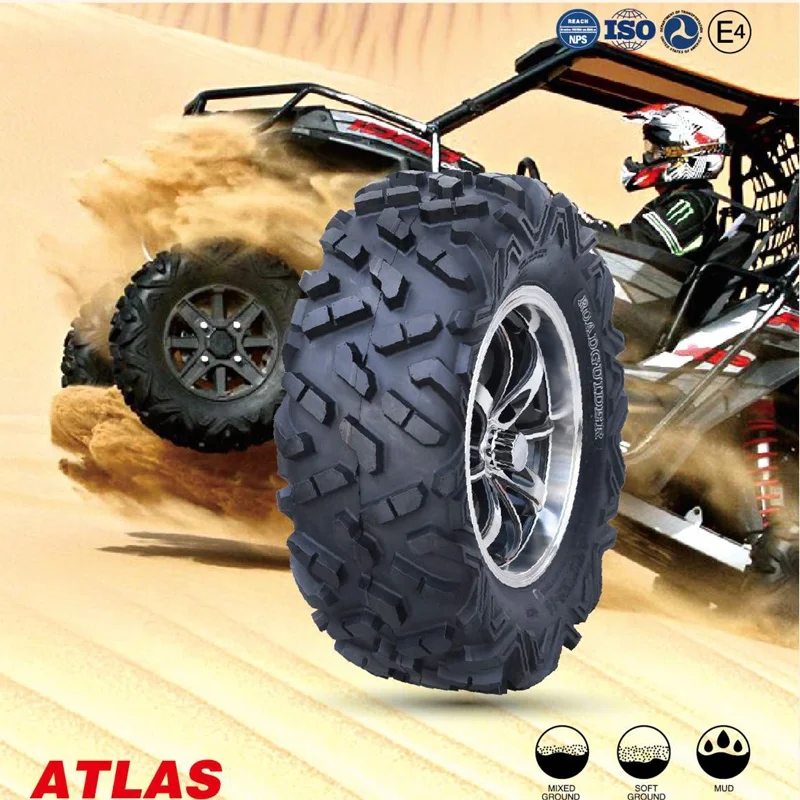 However, they shouldn’t be used for commuting on highways and city streets without dirt or other off-roading terrains, as they’ll wear down too quickly.
However, they shouldn’t be used for commuting on highways and city streets without dirt or other off-roading terrains, as they’ll wear down too quickly.
As with traditional road tires, the brand directly influences how long the tires last. Some companies make mud tires with deep grooves, while others use shallow treads to adapt to lightweight pavement driving scenarios.
Check the estimated mileage of your new tires for an accurate expectation. Though 40,000 miles (64,373.76 km) is the typical range, some only last about 20,000 miles (32,186.88 km).
Occasionally driving on pavement won’t permanently ruin your mud tires, but using them for daily commutes on such hard surfaces will undoubtedly take its toll. Protect your mud tires by using them on the proper surface, then read the final section for three must-know tips to make them last longer.
You’re probably reading this post because you’re worried your mud tires won’t last too long, but proper driving conditions can make them last for several years. To make your mud tires last longer than ever, employ these helpful suggestions:
To make your mud tires last longer than ever, employ these helpful suggestions:
Mud tires can last tens of thousands of miles when used in the right conditions. However, you shouldn’t rely on them if you usually drive on the pavement. While they’ll get the job done, mud tires wear down too fast and become useless on roads and sidewalks. You could use all-terrain tires if you drive on mud, pavement, and everything in between.
However, you shouldn’t rely on them if you usually drive on the pavement. While they’ll get the job done, mud tires wear down too fast and become useless on roads and sidewalks. You could use all-terrain tires if you drive on mud, pavement, and everything in between.
Explore more →
Brian Jones
Wheeling, Technical, Advice, Staff Stories
Brian Jones
Wheeling, Technical, Advice, Staff Stories
Nothing compares to heading out on the trail in your truck or Jeep outfitted with mud tires, but what do you do when you use the same vehicle for your daily commute?
Do mud tires still make sense at this point, or should you consider all-terrain tires instead? Let’s examine the difference between mud tires and all-terrain tires and see what makes the most sense for you.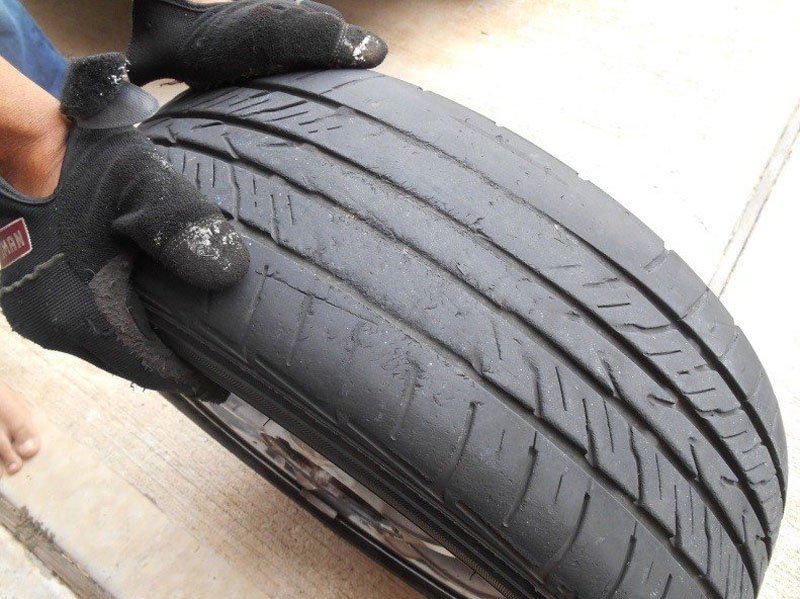
Source
First, let’s define what we mean.
Mud tires feature an aggressive, heavy block tread pattern that’s designed exclusively for off-road use. They are ideal for uneven, rocky and muddy terrain. You will find mud-terrain tires in larger sizes with reinforced construction for maximum durability.
Some people also purchase mud tires just for the aggressive appearance although most users need them to head off-road. You know who you are.
Yes, many mud tires are street legal and can be driven on the road while traveling highway speeds.
But just because you can do something, doesn’t mean it’s always the best option. If you don’t spend a lot of time driving in the mud, you might do better with all-terrain tires for your daily commute.
Source
It’s going to depend on your driving style, the tires you choose and the driving conditions. If your vehicle isn’t heavily modified, you might get around 40,000 miles with a mixture of street and off-road travel.
If your vehicle isn’t heavily modified, you might get around 40,000 miles with a mixture of street and off-road travel.
Depending on modifications though, you’re likely to see less than 20,000 miles out of some brands of mud-focused off-road tires.
Mud tires are designed to work best off-road within mud, sand, loose soil and jagged rocks. They come with a large tread block design which has deep and wide voids between them. This provides the room to dig into most off-road surfaces while the spaces between the knobs clear gravel, debris and mud.
Mud-terrain tires can often be heavy, noisy, and difficult to balance. They also provide clumsy handling and a rough ride on pavement. For people that only need to drive on the road for short distances, this won’t be a big deal. If, however, you drive often, you might not like the feel of mud tires on the street.
All-terrain tires feature smaller tread blocks and narrower voids. They are ideal for snowy, icy and wet conditions where mud tires don’t perform as well. Obviously, there isn’t as much raw off-road traction with this type of tire, but they run better on-road as a result of this design. AT tires offer a smoother on-street ride with less noise and better handling.
They are ideal for snowy, icy and wet conditions where mud tires don’t perform as well. Obviously, there isn’t as much raw off-road traction with this type of tire, but they run better on-road as a result of this design. AT tires offer a smoother on-street ride with less noise and better handling.
Any serious off-roader is going to discover serious disappointment when pushing the limit of an all-terrain tire’s traction. Still, they might be the best option for any vehicle that goes off-road and on the highway on a regular basis.
Source
There are several disadvantages to driving mud tires on the street.
The large tread blocks and depth will not help you to achieve a quiet ride. To see the proof of this, just look at what they do in Europe.
In some European countries, tires are evaluated by their noise level. Mud tires are exempt from this testing because they are significantly louder than on-road tires.
Of course, it doesn’t take a rocket scientist to figure this out; you’ve probably heard the roar of a mud-terrain tire on the road at least once in your lifetime.
To keep the mud tire rolling forward, there’s a lot of energy required. This leads to a decrease in fuel economy. If you want off-road performance plus additional fuel savings, then an all-terrain tire might be a better option.
Mud tires have a heavy-duty construction that adds thickness to the sidewall size. This increases abrasion resistance but creates a firm, hard ride. The rubber compounds are designed to wear far differently than, say, a performance summer tire on a performance car.
You may think the wide scoops of a mud tire would help in snow, but in anything less than feet of snow they will actually be a detriment.
You won’t have decent traction on ice or snow with the blocky tread. If you plan to drive in these conditions, you might consider the smaller blocks found on an all-terrain tire instead.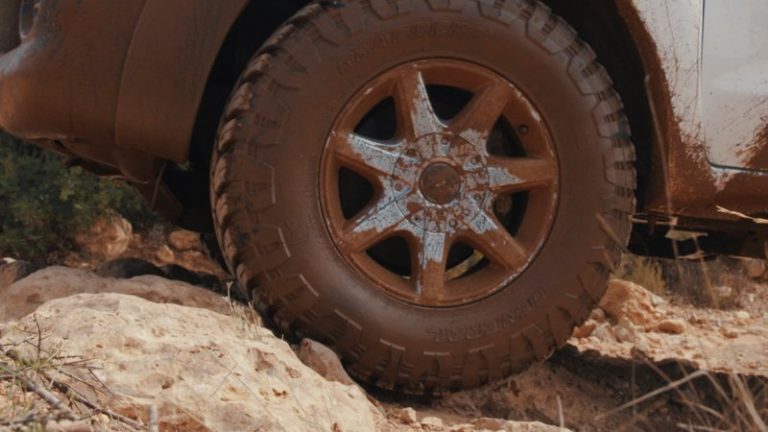
Source
While there’s a vast selection of mud tires to choose from, some brands and models excel above the rest. Some highly-rated mud tires include:
Goodyear Wrangler MT/R with Kevlar
BFGoodrich Mud-Terrain T/A KM2
Firestone Destination M/T
Dunlop Radial Mud Rover
Kumho Road Venture MT KL71
AT tires offer the best of both worlds. You can find a set that looks equally as jagged and rough as your favorite mud tire with more on-road capability. The most significant difference will be that the all-terrain tire provides you with additional stopping power. This set also provides a more comfortable and quieter ride for your everyday commute.
All-terrain tires have more tread edges so they can grip surfaces better. In addition, all-terrain tires also provide better traction on snowy and wet roads. If you plan to drive both on-road and off-road, the all-terrain tire is usually a better option.
If you plan to drive both on-road and off-road, the all-terrain tire is usually a better option.
If tire shine on a Jeep floats your boat, we can’t stop you | source
If you don’t spend the majority of your time driving through sand and mud, then mud tires might not be the right addition to your truck or Jeep. Of course, many people will still opt for the mud tires because of the rugged, aggressive look, but there are other alternatives.
We called an office meeting to come to a consensus among ourselves, and most of our staffers agree that mud tires on a roadgoing vehicle are a waste for several reasons:
fuel economy is drastically reduced
noise is drastically increased
handling is compromised
In addition, full-on mud tires often cost far more than their A/T counterparts yet they often deliver 2/3 to 1/2 of the miles of a more traditional pavement-focused tire.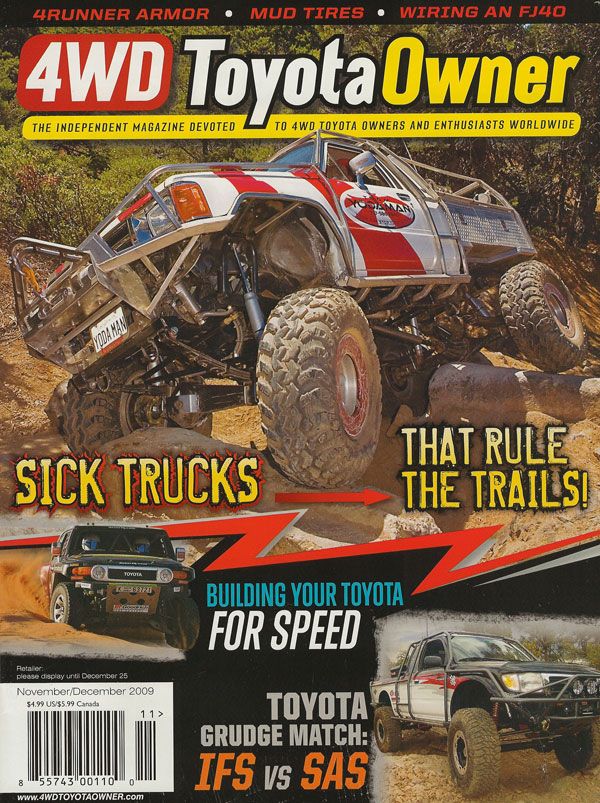 That means you’re spending more to buy tires that last for fewer miles.
That means you’re spending more to buy tires that last for fewer miles.
Every mile you spend driving a mud tire on pavement is money out the window. In many cases you could actually buy a second set of wheels just for your mud tires, drive on A/T tires daily, switch the sets when you go off-roading, and you’d still save money in the long run.
Hot take: Keep the mud tires for dedicated off-road vehicles instead. The mud-terrain tires provide the best ride while driving off-road but are far from the best option for highway travel.
What’s your experience with mud tires?
Do you have a vehicle equipped with mud tires? We would love to hear about your experience taking your truck or Jeep with mud tires on the road. Let us know how comfortable and quiet the ride is.
Cover Image Source
Tagged: Daily Driving on Mud Tires is a Huge Waste of Money
Is 90,000 enough for our lifetime? How long do mud tires last? — Magazine "4x4 Club" ..
.. Uncertainty appears at the very beginning. What to take for starting point, for the evaluation criterion - mileage or period of use? For it is obvious to someone that the kilometers wound on the tread are the true indicator, and someone easily refutes this thesis, demonstrating I-192 1994 production and, in general, in a good-looking condition. It is "in appearance", you're right understood. Therefore, facing the truth and ignoring the alarming coughing of manufacturers who like to semi-officially talk about three years of guaranteed use, I vote mileage as the criterion of truth. And I affirm that 60 thousand is the same figure on the odometer, which should make you think about how to scrape together the money for a new set. And we'll do it again caveat: if there is no money even for a used one, this text can be taken as purely theoretical.
What happens to mud tires during operation? What causes aging and what are its signs? Erase treadmill - It is obvious. Modern MT tires tend to show depth tread is about 11 mm in the center of the track and 13-16 mm in the shoulder area. Of course, there are different options and we do not take into account XT rubber, that is, extreme. The exact numbers are not important to us, since the traffic rules in the corresponding section are clearly fixes wear indicators at which tires are prohibited to be used and this is not considering that the manufacturers themselves often include in the design various wear indicators. Let me remind you of the paragraph of the rules and the data that are not allow the vehicle to operate.
Modern MT tires tend to show depth tread is about 11 mm in the center of the track and 13-16 mm in the shoulder area. Of course, there are different options and we do not take into account XT rubber, that is, extreme. The exact numbers are not important to us, since the traffic rules in the corresponding section are clearly fixes wear indicators at which tires are prohibited to be used and this is not considering that the manufacturers themselves often include in the design various wear indicators. Let me remind you of the paragraph of the rules and the data that are not allow the vehicle to operate.
SDA RF, 5. Wheels and tires.
5.1. Residual depth of tire tread pattern (at absence of wear indicators) is not more than:
for vehicles of categories L - 0.8 mm;
for vehicles of categories N2, N3, O3, O4 - 1 mm;
for vehicles of categories M1, N1, O1, O2 - 1.6 mm;
for vehicles of categories M2, M3 - 2 mm.
Our vehicles belong, if you remember, to passenger car categories, i.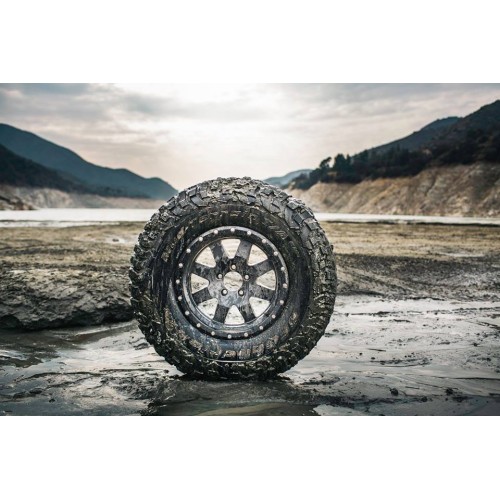 e., M1, N1, O1, O2 and our minimum is 1.6 mm. Can you imagine a mud tire with 1.6mm lugs? By the way, for Help, winter tires allow a remainder of 4 mm. But it is also important that MT does not can always be recognized as unusable even with a drawing sufficient in depth: “external damage (punctures, cuts, breaks), exposing the cord, as well as delamination carcass, delamination of the tread and sidewall, ”the traffic rules say. We have not yet mentioned the corresponding dimension and other pain and tears... But that's not all! I know a person who after driving 60 thousand km on a good MT of a well-known brand, he began to complain about knocking while driving. They bled the suspension, shook the steering, stretched the chassis - everything is in norm. And his SUV was heard as "knock-knock-knock" from the cabin a car moving nearby. In addition to the tires, there was simply nothing to make noise. Tried replace by borrowing a kit from a friend - and the knock was gone, and the vibration disappeared, although they thought that this is how the old pavement Nissan Patrol should shake.
e., M1, N1, O1, O2 and our minimum is 1.6 mm. Can you imagine a mud tire with 1.6mm lugs? By the way, for Help, winter tires allow a remainder of 4 mm. But it is also important that MT does not can always be recognized as unusable even with a drawing sufficient in depth: “external damage (punctures, cuts, breaks), exposing the cord, as well as delamination carcass, delamination of the tread and sidewall, ”the traffic rules say. We have not yet mentioned the corresponding dimension and other pain and tears... But that's not all! I know a person who after driving 60 thousand km on a good MT of a well-known brand, he began to complain about knocking while driving. They bled the suspension, shook the steering, stretched the chassis - everything is in norm. And his SUV was heard as "knock-knock-knock" from the cabin a car moving nearby. In addition to the tires, there was simply nothing to make noise. Tried replace by borrowing a kit from a friend - and the knock was gone, and the vibration disappeared, although they thought that this is how the old pavement Nissan Patrol should shake.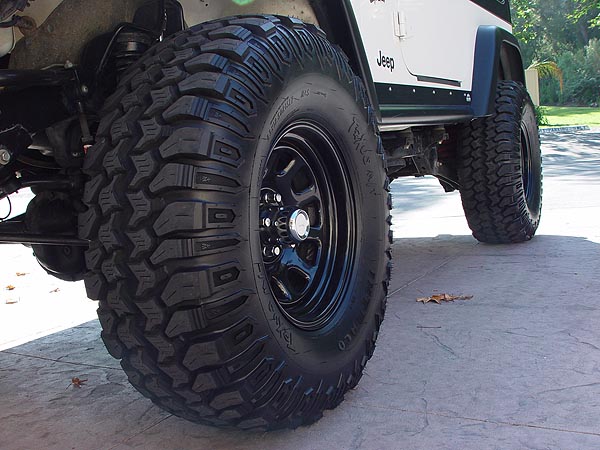 We started looking and found out that a person, back in the dock-like spring, went to the Carpathians, where a couple of hundred kilometers drove over a hard rocky foothill at a decent speed and reduced pressure. Fields of stones the size of army helmets were interspersed with muddy ruts. and puddles. Shallow, but extremely slippery. This apparently killed the cord, it is somewhere it broke down and it didn’t even come to a bump, but the geometry of the wheel changed under load. They couldn’t find anything at the tire fitting ... At the same time, the wheels at that time barely turned two years old. After that, I asked the expeditionaries who travel on mud tires far and varied, and received extremely ambiguous answers, but they had one thing in common - with intensive use, the maximum mileage on the kit was about 100-120 thousand, about three or four seasons and tires were rejected more often not due to tread wear, but due to other damage. And the "fencing" of the tire on the stones was an extremely rare case, and most often - side cuts and plucked checkers.
We started looking and found out that a person, back in the dock-like spring, went to the Carpathians, where a couple of hundred kilometers drove over a hard rocky foothill at a decent speed and reduced pressure. Fields of stones the size of army helmets were interspersed with muddy ruts. and puddles. Shallow, but extremely slippery. This apparently killed the cord, it is somewhere it broke down and it didn’t even come to a bump, but the geometry of the wheel changed under load. They couldn’t find anything at the tire fitting ... At the same time, the wheels at that time barely turned two years old. After that, I asked the expeditionaries who travel on mud tires far and varied, and received extremely ambiguous answers, but they had one thing in common - with intensive use, the maximum mileage on the kit was about 100-120 thousand, about three or four seasons and tires were rejected more often not due to tread wear, but due to other damage. And the "fencing" of the tire on the stones was an extremely rare case, and most often - side cuts and plucked checkers. Most common area of injury – Asian direction, stones and big fast hauls in the off-season.
Most common area of injury – Asian direction, stones and big fast hauls in the off-season.
I would like to conclude that travelers on North-West, or those who ride around the pumping station in the Moscow region are not in danger. But, unfortunately, we do not have complete statistics, and you can collect it only from your help. Write in the comments what is the mileage of your mud tires, what is the intensity of use and the surface on which you have to drive. And if there will be enough data, we promise to put it in a readable form and lay it out in the form of an article.
In the meantime, from practical conclusions, we can advise not drive off-road, be sure to pump tires back on the road (even on gravel) and inspect the wheels after each serious off-road.
Related materials
7 rubber signals: what the tire says about car problems
How do you know when tires are completely worn out and it's time to change them? Everything is simple. For summer tires, the limit is 1.6 mm of residual tread depth, and for winter (or all-season, used in winter) - 4 mm. Modern summer tires can cover from 40,000 to 70,000 km, depending on driving style and vehicle characteristics. An average motorist rolls such a mileage on summer tires in 2-3 seasons. Moreover, wear implies not only a decrease in tread depth. For millions of cycles of deformation, the strength of the carcass and its adhesion to the layers of the rubber compound are violated. In short, every 2-3 years you should buy a new set of tires.
For summer tires, the limit is 1.6 mm of residual tread depth, and for winter (or all-season, used in winter) - 4 mm. Modern summer tires can cover from 40,000 to 70,000 km, depending on driving style and vehicle characteristics. An average motorist rolls such a mileage on summer tires in 2-3 seasons. Moreover, wear implies not only a decrease in tread depth. For millions of cycles of deformation, the strength of the carcass and its adhesion to the layers of the rubber compound are violated. In short, every 2-3 years you should buy a new set of tires.
In the event of irreparable damage to one of the tires and a relatively high total mileage of the set, it is also worth considering replacing it. Well, or about buying at least a pair of new tires, which, for any type of drive, should be installed on the front axle. We put two tires back - the most decent of the remaining ones.
Many motorists drive only a few thousand kilometers a year.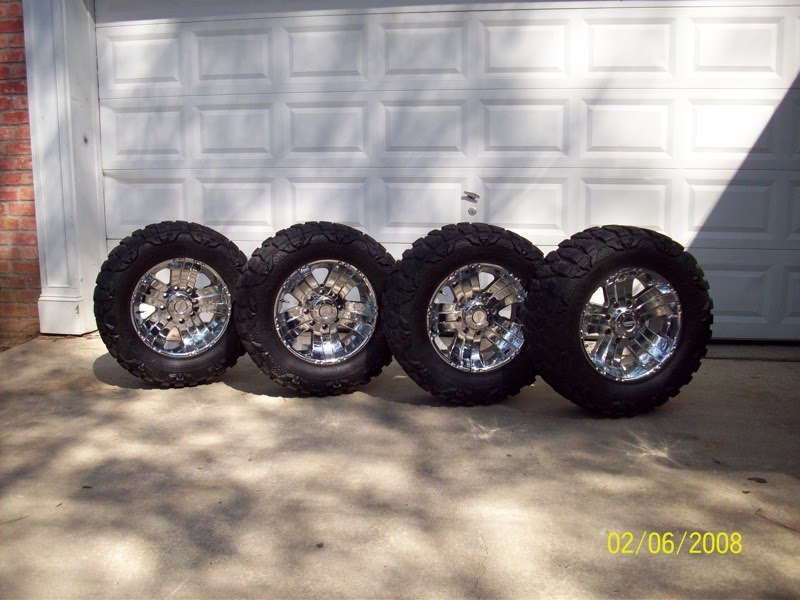 This does not mean that the tires will serve you for several decades. According to Russian requirements (GOST 4754-97), the service life of passenger car tires is 5 years from the date of manufacture. And for example, Continental recommends that all car tires (including the spare tire) older than 10 years old should be replaced with new ones. Therefore, with small runs, you can navigate for ten years. The date of manufacture of the tire is indicated on the sidewall. Usually it is an oval with four numbers. The first two are the ordinal number of the week in the year, the last two indicate the year.
This does not mean that the tires will serve you for several decades. According to Russian requirements (GOST 4754-97), the service life of passenger car tires is 5 years from the date of manufacture. And for example, Continental recommends that all car tires (including the spare tire) older than 10 years old should be replaced with new ones. Therefore, with small runs, you can navigate for ten years. The date of manufacture of the tire is indicated on the sidewall. Usually it is an oval with four numbers. The first two are the ordinal number of the week in the year, the last two indicate the year.
Related materials
How to change the car yourself - detailed instructions
Tires should be rotated periodically in accordance with the vehicle manufacturer's recommendations - information on this can be found in the owner's manual.
We can advise you to carefully use the tires and, most importantly, to store them correctly in the off-season. First of all, during storage, it is important to exclude direct sunlight from hitting the tires, which greatly age the rubber. Tires without rims should be placed vertically, and stacked on rims.
First of all, during storage, it is important to exclude direct sunlight from hitting the tires, which greatly age the rubber. Tires without rims should be placed vertically, and stacked on rims.
And before installing tires on a car at the beginning of the season, evaluate their condition. There should be no cracks in the tread and sidewalls. The tire should not be dry, it should remain rubbery and not look like baked plastic.
Related materials
Driving on badly worn tires - will I be fined or not?
Winter tires have a much shorter life span. They almost always fail due to the wear of the treadmill, because the tread of a new tire is 7–8 mm, and only 3–4 mm remain working height. If the tires are studded, then with such wear there are very few metal elements left, and the tire will not provide adequate safety when driving on a winter road. However, not only spikes, but also Velcro, with such a degree of wear, also lose most of their capabilities.